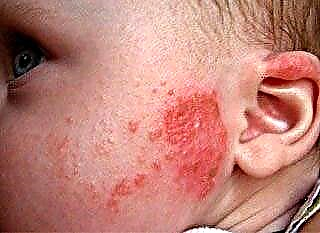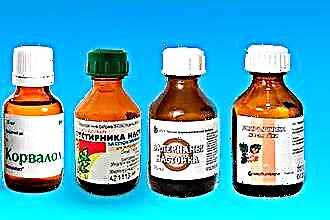Before you start listing the causes of bradycardia, you first need to figure out what it is. Bradycardia in children is a decrease in heart rate from 5 to 40% below normal. The complex wording is explained by two phenomena. First, a child's heart beats much faster than an adult's. Secondly, each age has its own heart rate rate.
Causes
So, bradycardia in children is a decrease in heart rate from 5 to 40% below normal. Secondly, each age has its own heart rate rate.

Even when the baby is in the womb, the fetal heart rate changes at different stages of pregnancy.

Before the heart contracts, a nerve impulse first occurs in the sinus node, which is located in the right atrium. Then the excitation wave propagates along the conducting system to the ventricles. When it reaches them, there is a compression of the myocardium and the release of blood into the vessels.
Bradycardia can develop as a result of a slowdown in the formation of nerve impulses, or an increase in the time they pass through the conducting system of the heart.
This can happen due to the following reasons:
- heart disease - myocarditis, congenital defects (atrial or ventricular septal defects, arrhythmogenic right ventricular dysplasia, etc.);
- diseases of the endocrine system - the most prominent representative is hypothyroidism (decreased synthesis of thyroid hormones);
- high concentration of potassium in the blood - this can be, for example, in severe diseases accompanied by renal failure;
- infections - typhoid fever, brucellosis, mumps;
- overdose of certain medicines;
- congenital anomalies of the cardiac conduction system.
Bradycardia in the fetus during pregnancy can occur both as a result of developmental defects (for example, heart defects) and as a result of maternal diseases - severe anemia, thrombosis, systemic vasculitis, etc.
There is a phenomenon called "benign bradycardia-asystole in the fetus." It usually develops in the second trimester of pregnancy. These are short episodes (just a few seconds) of bradycardia and complete cardiac arrest. They are temporary and absolutely safe for the health and life of the child.
Bradycardia in newborns usually indicates a serious condition of the baby (for example, prematurity) and requires urgent resuscitation.
Signs and symptoms
The clinical picture directly depends on the degree of bradycardia. With a slight slowdown in heart rate, the child can feel great without experiencing any discomfort.
With a more pronounced decrease in heart rate, the child becomes less energetic, he quickly gets tired, he constantly tends to sleep, the skin becomes pale. His head is spinning, his eyes darken. He may even faint.
Sometimes I had to observe children who, due to severe bradycardia, lost consciousness, their heart stopped beating for a while and their breathing stopped, then convulsions began. After a few seconds or a couple of minutes, the child wakes up. It resembles an epileptic seizure. This phenomenon is called Morgagni-Adams-Stokes syndrome. It develops with a very slow heartbeat. Its occurrence is due to severe hypoxia (oxygen starvation) of the brain.
An attack of Morgagni-Adams-Stokes syndrome is a very dangerous condition, as it can lead to the rapid death of a child.
When do you need to see a doctor right away?
If your child is not seriously involved in sports, and his heart rate is low compared to the age norm, then he should be shown to a cardiologist, but not necessarily right away. It's another matter if he is all the time lethargic, sleepy, and faints. In this case, the visit to the doctor should not be postponed. And, finally, if a child develops an attack of Morgagni-Adams-Stokes syndrome, you need to call an ambulance.
What bradycardia are more common in children
Depending on the mechanism of development (slowing down the formation or conduction of a nerve impulse), as well as on electrocardiographic signs, the following types of bradyarrhythmia in children are distinguished:
- sinus;
- atrioventricular (atrioventricular) blockade II and III degree;
- intraventricular block (bundle branch block);
- sick sinus syndrome.
There are also intra-atrial blockages, but they are rarely accompanied by a slowdown in the heartbeat. You can find out more about what it is and how to act correctly here.
Attacks of Morgagni-Adams-Stokes syndrome occur with atrioventricular block and sick sinus syndrome
The most common of all forms is sinus bradycardia.
Sinus bradyarrhythmia
Unlike other types, with sinus bradycardia, the heartbeat is slowed down, but rhythmic. It poses the least danger to the health and life of the child, i.e. is the most benign of arrhythmias,
I also want to note that sinus bradycardia is not always a pathology. For example, a child's sinus bradyarrhythmia can occur during sleep. Children who are actively involved in sports and regularly perform intense physical exercises also often have a similar phenomenon, which is an absolute norm. The question of slowing the heart rate in athletes is well dealt with here.
What examinations a child needs to undergo and when
As the first method of examination, I prescribe electrocardiography. This allows you to determine the type of bradycardia.
ECG signs of sinus bradycardia:
- a decrease in heart rate in the form of an increase in the distance between the R waves;
- correct sinus rhythm - the same distance between the R waves and the presence of positive P waves, which have a normal shape in leads II, III and aVF.

ECG signs of atrioventricular block:
- II degree - an increase in the PQ interval, periodic loss of the QRS complex;
- III degree - complete inconsistency of atrial and ventricular rhythms, i.e. different number of P waves and QRS complexes.

ECG signs of sick sinus syndrome:
- a decrease in heart rate in the form of an increase in the distance between the R waves;
- attacks of paroxysmal supraventricular tachycardia, atrial fibrillation may occur.
Sometimes bradyarrhythmias can occur in seizures. Therefore, I additionally prescribe Holter (daily) ECG monitoring. Also, if I suspect a congenital heart disease, I do echocardiography.
If, according to the cardiogram, I suspect that the child has sick sinus syndrome, then to confirm it, I prescribe an electrophysiological examination of the heart.
Treatment
Not all bradycardia requires special treatment. If the decrease in heart rate is insignificant and is not accompanied by any clinical symptoms, therapy is not needed.
The type of bradyarrhythmia is also important. If your child has significant sinus bradycardia (below 25-40% of his age norm), and he does not play sports, then first of all it is necessary to examine him to find a possible reason for a slow heart rate. This includes checking the concentration of thyroid hormones in the blood, potassium, measuring intracranial pressure, etc.
Often, eliminating the causative factors is quite enough to normalize the heartbeat.
Unfortunately, there is no effective cure for the permanent treatment of bradyarrhythmia. In order to improve the child's condition only for a short time, I use the following drugs - anticholinergics (Atropine) and beta-adrenergic agonists (Izadrin).They allow you to increase the heart rate for a short time.
The most effective treatment for severe bradycardia today is pacing - temporary or permanent.
Temporary pacemaker involves the delivery of a weak electric current through the skin of the chest or through the esophagus. In most cases, this allows you to achieve normalization of the heart rate. Transesophageal stimulation is especially effective for relieving bradycardia in infants and children under 2 years of age.
If it is unsuccessful, then a permanent pacemaker is installed. It is a small device that provides a normal heart rate. It is sutured under the skin in the subclavian region. The wires from it go through large vessels directly to the heart.
Forecast: is it worth worrying
In fact, in the vast majority of cases, bradyarrhythmia in adolescents and children is mild and does not pose a particular threat to life and health. The percentage of severe bradycardia (sick sinus syndrome, atrioventricular blockade) with a high mortality rate among children is extremely small.
Expert advice
If your child suffers from any cardiological disease and for treatment he is prescribed drugs such as beta-blockers (Bisoprolol, Metoprolol), calcium channel blockers (Verapamil, Diltiazem), you need to remember that while taking them, the pulse may slow down. A decrease in heart rate by about 5-10 beats from the lower limit of the age norm is not dangerous. But, if the child's heart rate has decreased more, it is imperative to inform the cardiologist so that he can adjust the dosage.
Case from practice
Let me give you an example from my own experience. My mother came to see me with a child of 14 years old. Recently, the mother noticed that her daughter had become sluggish, sleepy and sluggish, and began to gain weight despite her poor appetite. When I started examining the girl, I found a decrease in heart rate to 52 beats per minute, swelling of the face, legs and arms, and an enlarged thyroid gland. I prescribed electrocardiography, thyroid hormone tests, antibodies and thyroid ultrasound.
The results showed sinus bradycardia, an increase in TSH and antibodies to thyroglobulin, and a decrease in free thyroxine (T4). Diagnosed with "Autoimmune thyroiditis (Hashimoto), stage of hypothyroidism." Hormone replacement therapy with L-thyroxine was prescribed. Some time after the start of treatment, the girl became more energetic, the swelling disappeared, her weight and pulse rate returned to normal. Recommendations are given to regularly donate blood for thyroid hormones to monitor the effectiveness of therapy.



